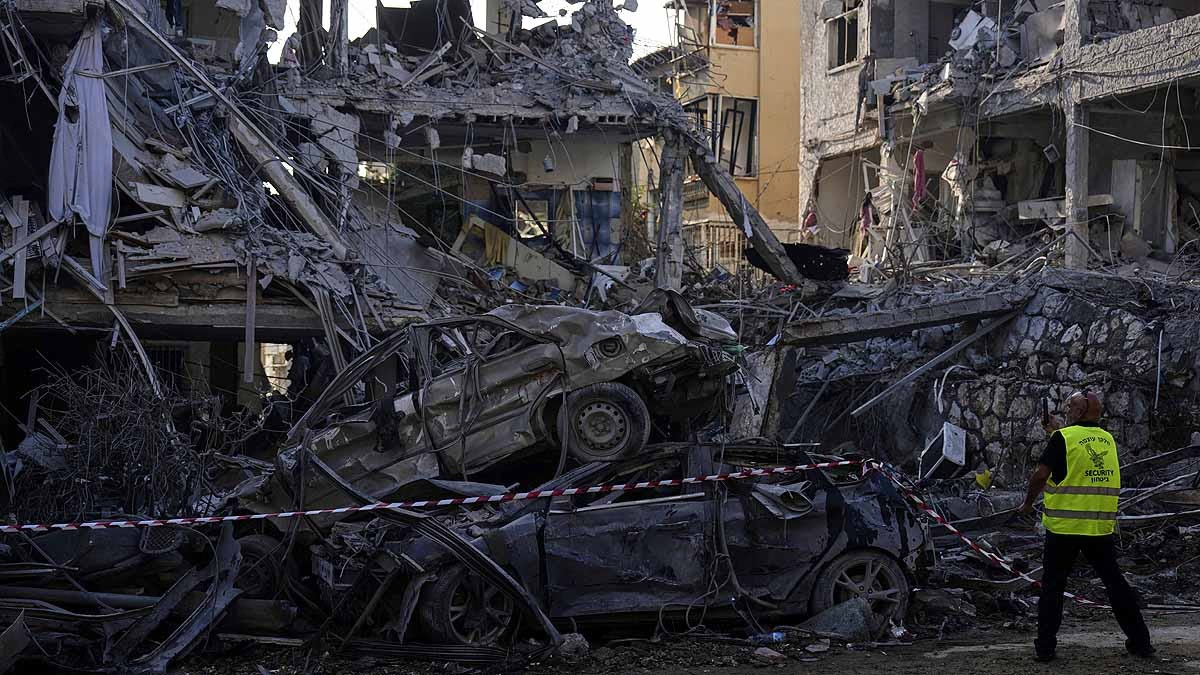The nine nuclear-armed nations—United States, Russia, United Kingdom, France, China, India, Pakistan, North Korea, and Israel—are focused on advancing their arsenals in 2024. Their efforts to upgrade old and incorporate new, more powerful weapons signal a growing global security threat.
Inventory and Status of Nuclear Weapons
By January 2025, there were an estimated 12,241 nuclear weapons worldwide, with about 9,614 ready for military use. Approximately 3,912 were stationed on missiles and aircraft, while the rest were in central storage. Roughly 2,100 deployed weapons, primarily with Russia and the United States, were on high alert ballistic missiles, a trend China might follow during peacetime.
Read More:

Source: aajtak
End of the Era of Nuclear Reduction
Following the Cold War, Russia and the US dismantled old weaponry, reducing global nuclear numbers. This trend is reversing as dismantlement slows and new weapon deployment accelerates.
Stockholm International Peace Research Institute
expert Hans M. Kristensen remarks the era of diminishing nuclear arms is over, noting an uptick in arms growth and strained disarmament agreements.
Top Nuclear Powers: Russia and America
Holding 90% of global nuclear weapons, Russia and America maintained their arsenal levels in 2024 while striving for modernization. If the 2010 New START treaty, expiring in 2026, isn't renewed, both nations might see increased missile-deployed arsenals.

Source: aajtak
America's 2024 nuclear modernization faced planning and funding challenges, potentially raising costs. Russia encountered issues like the failed Sarmat missile test. Despite this, both nations could expand their nuclear numbers in the future.
China's Rapid Advancement
According to SIPRI, China now possesses at least 600 nuclear weapons, growing by 100 annually since 2023. By January 2025, China completed or nearly finished 350 new intercontinental ballistic missile (ICBM) silos. If this pace continues, it could rival Russia or America by decade's end. Even with 1,500 weapons by 2035, it would only be a third of Russia and America's stockpile.
Read More:
India and Pakistan's Dynamics
India marginally increased its arsenal in 2024, developing new delivery systems. India's 'canisterized' missiles, capable of carrying nuclear weapons, might remain deployed even during peacetime. Some missiles can carry multiple warheads.

Source: aajtak
Concurrently, Pakistan is also advancing new delivery systems and expanding nuclear material stocks. A conflict in early 2025 between the two nations raised nuclear crisis fears. SIPRI specialist Matt Korda cautioned this as a warning for nations increasing reliance on nuclear arms.
Global Nuclear Developments
United Kingdom: Plans for future growth after halting increase in 2024, committing to construct four new nuclear submarines.
France: Continues work on new submarines, cruise missiles, and upgrading existing systems.
North Korea: Possesses 50-58 weapons, with the capacity to construct 40 more. In 2024, it declared intentions to develop 'tactical nuclear weapons.'
Israel: Non-publicly acknowledging its nuclear status, 2024 saw Israel advancing missile technology and the Dimona reactor site.
Read More:
Crisis of Arms Control
SIPRI Director Dan Smith warns of the near-collapse of US-Russia nuclear control. Prospects of new agreements post-New START are slim as the US insists on including China, complicating negotiations further.
The Impact of New Technologies
Emerging technologies such as Artificial Intelligence (AI), cyber technology, space assets, and missile defense alter nuclear dynamics, potentially affecting weapon security and increasing crisis misjudgment risks. Smith notes that the new arms race is riskier, with traditional control methods faltering.
Increasing Global Nuclear Debates
Discussions about nuclear armament are intensifying in East Asia, Europe, and the Middle East. Some nations are contemplating developing their nuclear capabilities. Belarus and Russia claim nuclear weapon deployment in Belarus, while some European NATO countries are prepared to host American weapons. France emphasizes its nuclear arsenal's role in European security.




